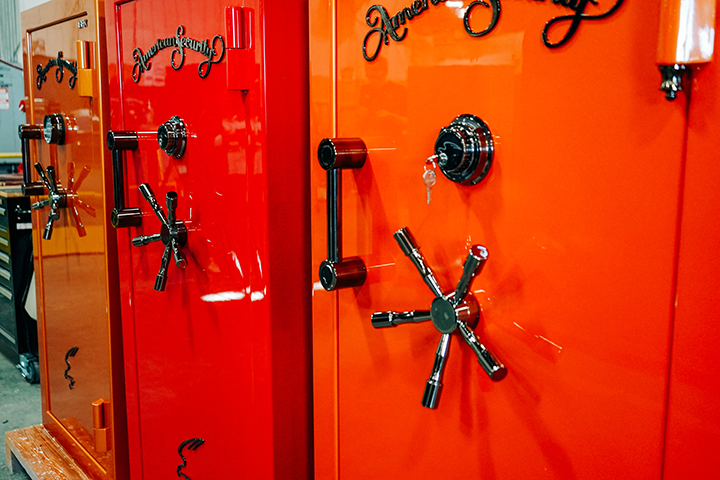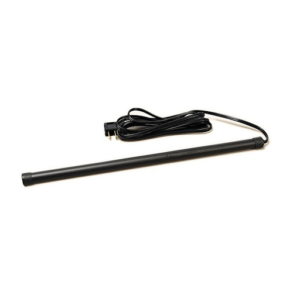When it comes to protecting valuable items from fire, investing in a fire-rated safe is an excellent way to proactively safeguard what matters most to you. However, simply owning one is not enough; understanding how to maximize its use and prolong your investment is key. Let’s explore various aspects of fire-rated safes, including what to store, maintenance tips, optimal locations for placement, and additional security measures you should consider.
What Should You Store in a Fire-Rated Safe?
Of course, collecting a list of what items you want to keep in a fire-rated safe is the first step in determining the size and fire rating you need. For digital media such as CDs and DVDs, those items need to stay under 90°F. Also, paper chars at 350°F, so any documents you plan on storing should be taken into consideration when you’re deciding on which fire rating you want to go with.
The primary purpose of these fire safes is to shield your possessions from extreme temperatures and flames. Below are some items that should be considered for storage:
- Important Documents: Items like birth certificates, passports, and legal documents are vital and often irreplaceable.
- Financial Records: Tax returns, bank statements, and investment information should be safeguarded to prevent identity theft and loss of financial assets.
- Valuables: Jewelry, collectibles, and heirlooms should be stored to avoid significant personal and monetary loss.
- Firearms: For avid gun collectors, a fire-rated safe provides a secure storage solution that protects firearms from fire damage while also keeping them out of the hands of unauthorized users or children.
In addition to those items, consider storing family photographs and videos that capture irreplaceable memories. These sentimental items can often hold more value than their monetary worth, making their preservation just as important. You might want to also include any emergency contact information or medical records, as these can be vital in times of crisis. Having a comprehensive list of contacts and medical histories can expedite assistance during emergencies.
For sensitive items such as paper documents and/or digital media, we recommend storing them within another bag or container in your safe. This is because many fire-resistant safes are made out of materials that emit steam when exposed to high heat, which could inadvertently damage paper and electronics.
How Should You Take Care of a Fire Rated Safe?
Proper care and maintenance of your fire-rated safe is key to promoting its longevity and effectiveness. We recommend the following steps to help keep your safe in excellent condition.
- Regular Inspections: Periodically check your safe for any signs of damage. Wear and tear can accumulate over time without you even realizing it, so inspect the exterior and interior regularly. Also, if you use a digital keypad lock, make sure the buttons that you repeatedly press for your code aren’t worn down.
- Keep It Organized: The last thing you want during an emergency is to have to sift through a disorganized safe to access what you need most. Make sure the interior is set up in a way where you can grab what you need and go at a moment’s notice.
- Check the Lock Mechanism: Test the lock periodically to make sure it works smoothly. If you notice any issues, consider consulting a locksmith.
- Climate Control: Store your safe in a cool, dry environment that avoids extreme temperature fluctuations, which can affect its condition. The interior of safes can often accumulate moisture, so it’s important to keep the inside of the container as dry as possible by using silica gel packets or a dehumidifier.
In addition to these basic care steps, it’s a good idea to maintain an up-to-date list of the items stored in your safe and keep a copy in a secure, separate location. In an emergency, it can be challenging to recall where things are located and what’s inside your safe, so having a digital backup—such as a digital document stored in the cloud—can provide peace of mind and help you stay organized during unexpected situations.
Where to Keep a Fire-Rated Safe
The location of your fire-rated safe is just as important as what you store in it. Here are some areas to consider for optimal placement:
- Hidden Locations: Situate your safe in areas that are not immediately visible to intruders. This can include behind furniture or within the walls.
- First Floors: In the event of a house fire, floors can easily collapse. To prevent your safe from falling and experiencing an impact, try to find an area on the first floor of your house instead. Plus, since heat rises, the bottom floor of your home will likely have a lower temperature than the rest of the house during a fire.
- In a Closet: Keeping your safe in a closet with the door closed can help reduce the temperature and exposure to smoke for a longer period of time.
It’s just as important to keep in mind accessibility when you’re selecting where you store your safe. For instance, if you’re a gun owner and want your arsenal close by in case of a break-in, many people in this circumstance keep their safe in a closet near their bedroom. For documents that need to be accessed frequently, keeping your safe in a home office or master bedroom might be best for that easy access. However, balance this with the need for security; a compromise might be to use a discreet but accessible location that still offers protection from prying eyes.
Another factor to consider is the flooring and structure of the area where you plan to place the safe. Heavy safes can be cumbersome and may require a sturdy, level surface to prevent tipping or damage. Depending on the weight of your safe, if you plan on storing it on an upper level, you may need to reinforce the floor. If you’re placing your safe in a basement, ensure that the floor is dry and free from potential water damage, as basements can be prone to flooding. It’s also wise to think about future needs; if you anticipate needing to store more items in the future, choose a location that allows for easy expansion or relocation of the safe without too much hassle.
In addition to where you store the safe, we advise anchoring your safe for extra security. This adds another layer of protection against burglars and prevents the safe from tipping or dislodging during natural disasters such as tornadoes, wildfires, and other extreme weather conditions.
Additional Safe Accessories
While a fire-rated safe offers excellent protection, combining it with some useful accessories can help you better organize the interior. Consider the following options.
Use Additional Fire-Resistant Bags/Containers
By keeping your valuables and documents in additional fire-resistant bags and containers within your safe, you’re adding another layer of protection should it all be subjected to high heat.
Cabinets
For smaller items like jewelry pieces, purchasing additional cabinets that can sit inside your safe can help you organize your collection instead of piling these cherished items randomly inside.
LED Lighting
To help you navigate the interior of your safe faster, an LED light kit can help illuminate the container so you can quickly find what you’re searching for. It’s much more convenient instead of looking for a flashlight in the case of an emergency.
Safe Cloak
To help store your safe in a discreet manner, a safe cloak can help make the vault look like an ordinary cabinet. It helps a little on the security side of things but can also serve an aesthetic purpose if you’d prefer to have the safe blend into its surroundings.
Key Takeaways on Using a Fire Rated Safe
To boost the longevity of your safe and maximize your investment, it’s important to take care of the product so that it lasts for many years to come. To use a fire-rated safe to the best of your ability, we recommend:
- Regularly maintain your safe to ensure it operates as intended.
- Select an optimal location that enhances its security and accessibility.
- Implement additional security features to protect against the elements (like fire-resistant bags, dehumidifiers, silica packets, etc.)
By following these guidelines, you can fully leverage the benefits of a fire-rated safe and safeguard your valuables against potential threats. The time spent organizing and maintaining your safe will provide long-term reassurance in your asset protection efforts.
Additionally, we urge you to familiarize yourself with the specific fire ratings for safes, as different ratings indicate varying levels of protection against high temperatures. For instance, a safe rated for 30 minutes will offer a different level of protection than one that holds a 2-hour rating. Understanding these ratings can help you make informed decisions on what type of safe to invest in and what items you should consider storing inside of it.
Finally, think about the potential need for accessibility during emergencies. While it’s important to secure your safe, you should also be able to access it quickly if necessary. This balance can be achieved by choosing a location that is both discreet and easy to reach.
Now that you understand the importance of maximizing the use of a fire-rated safe, it’s time to take action and make sure your valuables are protected with the best. American Security Safes offers a wide selection of top-quality safes to suit your specific needs. Don’t wait until it’s too late; Browse our models and give yourself the peace of mind you deserve!




